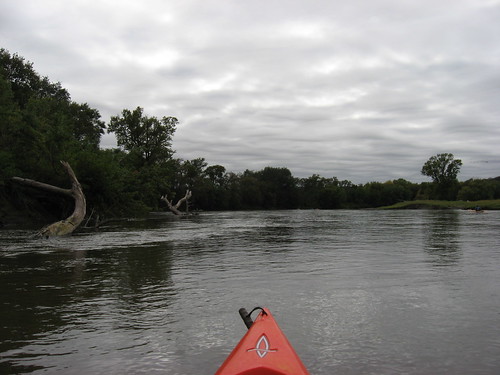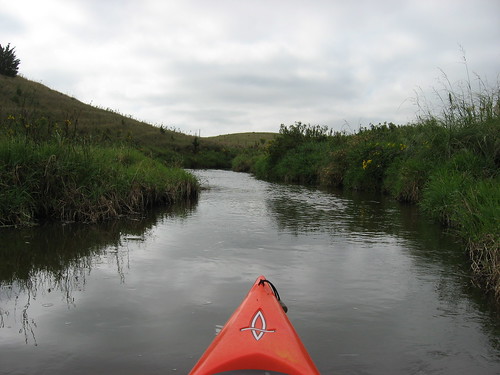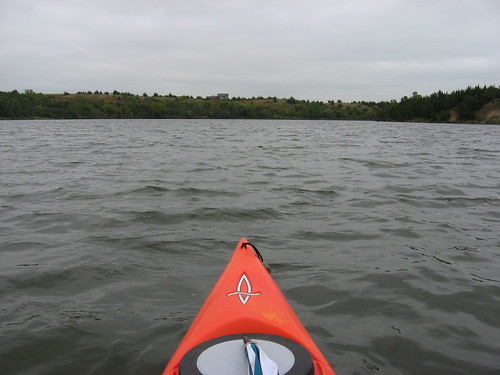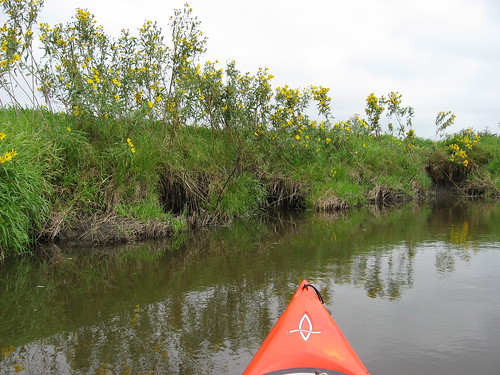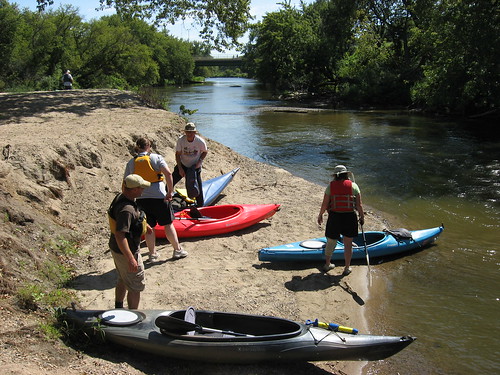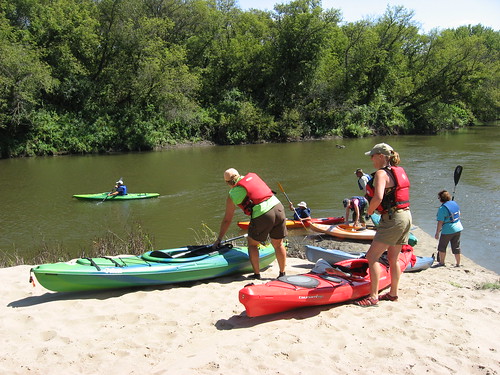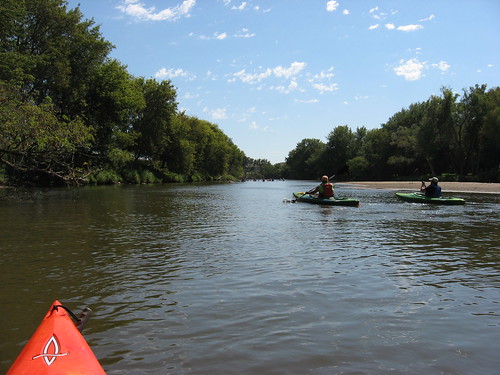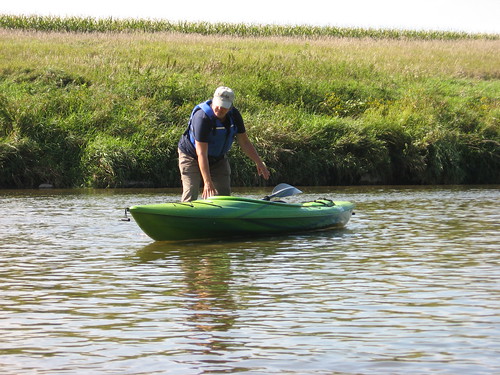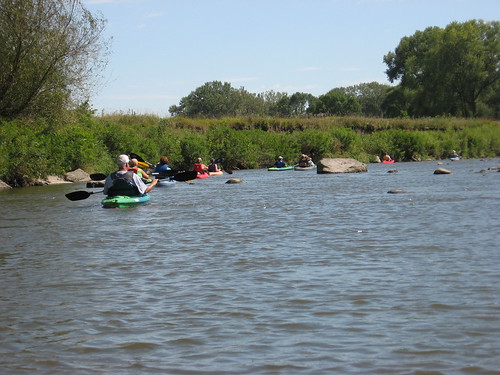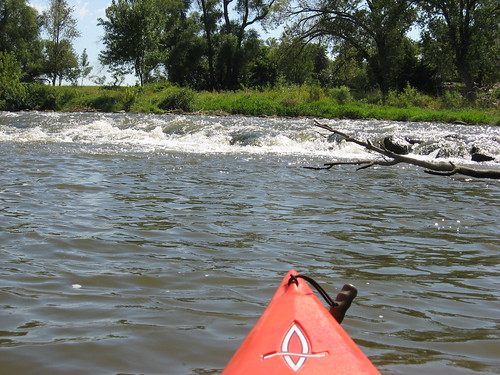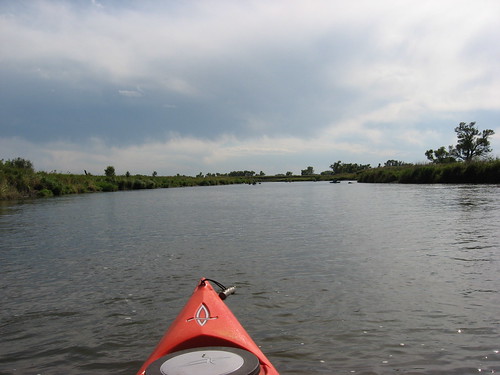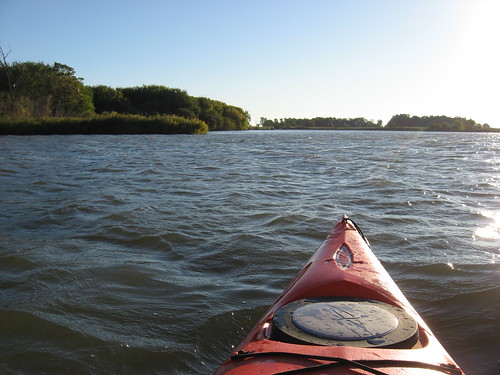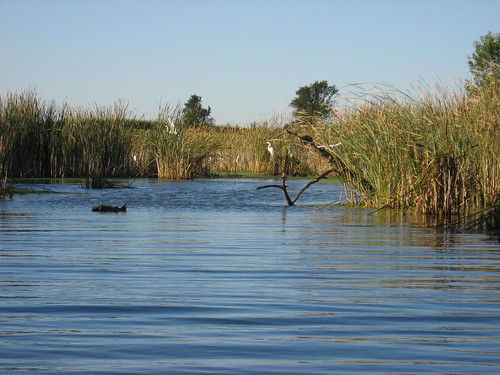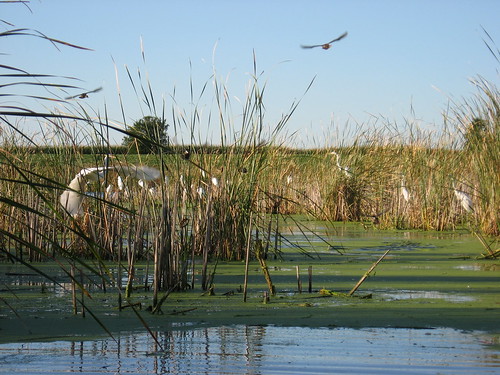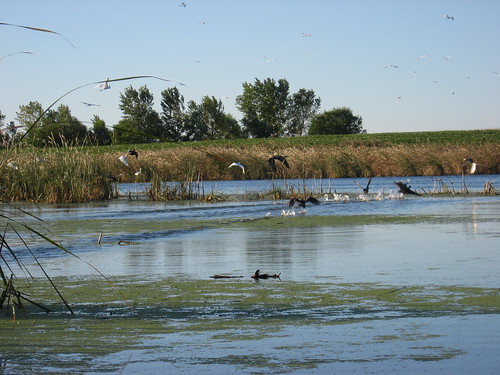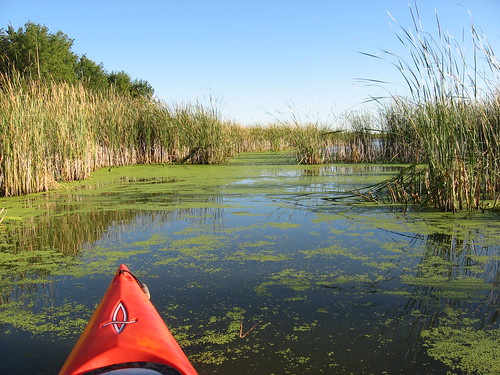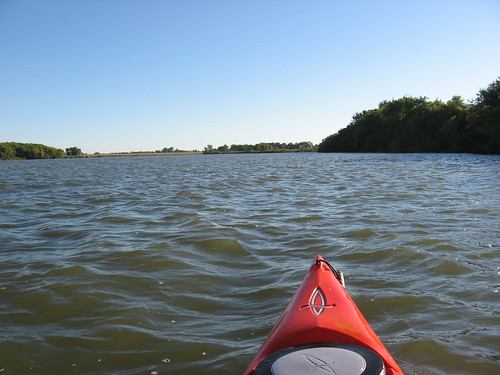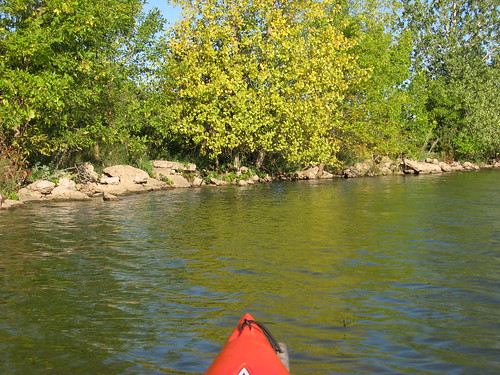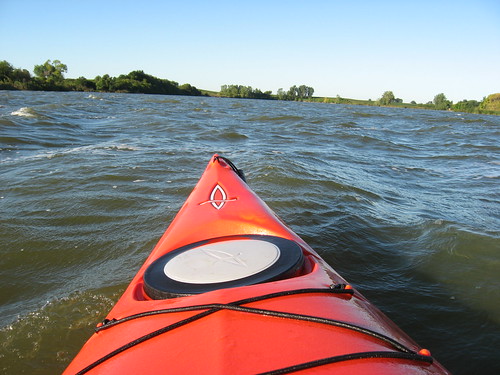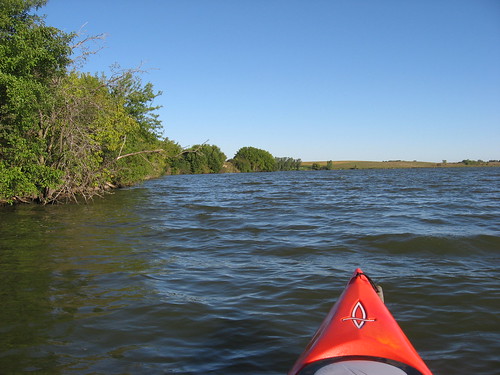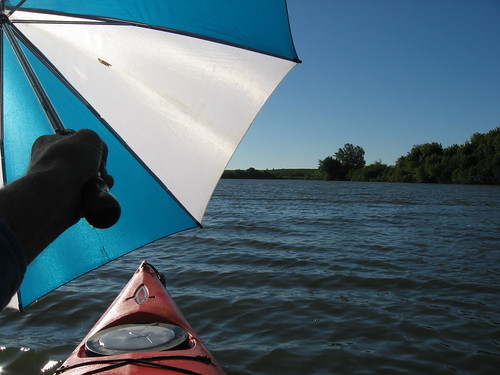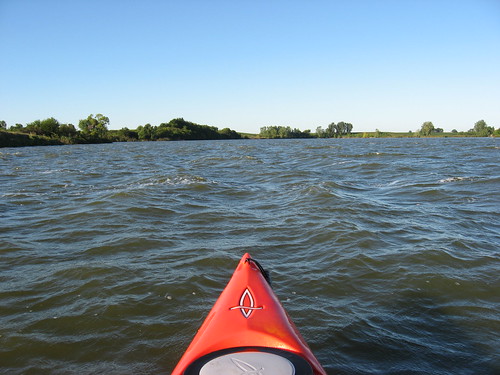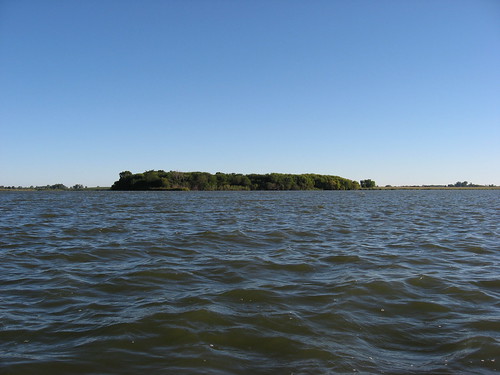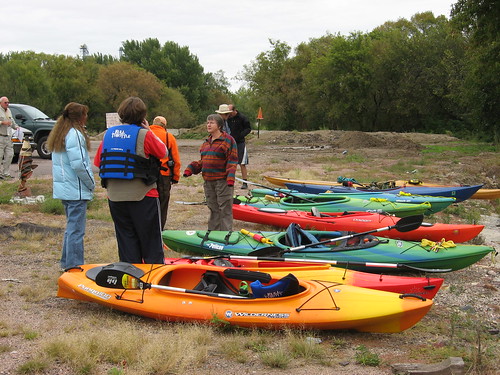
Today, I joined with a fleet of eight kayaks paddling from Canton to Newton Hills, a distance of nine miles along a full, deep, and fast Big Sioux River.

This was a cruise that had been planned by David and Mary Finck and Larry Braaten, board members of the SDCKA, and had also been postponed a number of times due to high water.
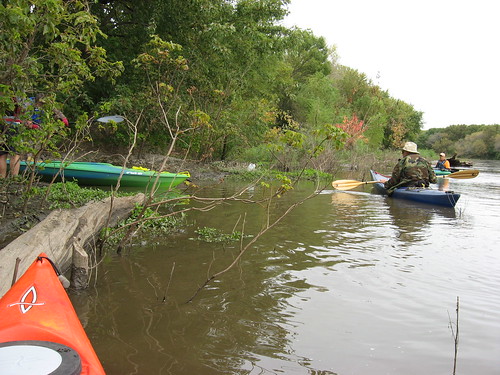
The cruise today began just above the park in Canton in an industrial type parking lot with a ramp leading down to the river. A set of rapids, formed as the river flows through the debris of a low-head dam dismantled long ago, faced us within just 100 feet or so from the put-in. We all stood on the high bank looking out at the rapids considering the best approach. The ramp leading into the river at the park was closed due to earlier flooding and damage. The passage through seemed okay to all of us, and we moved through without incident.
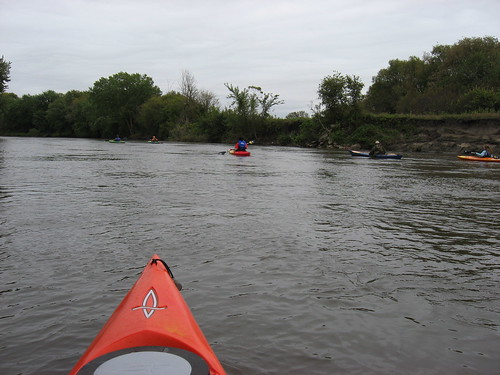
We had gathered at the prearranged put-in by 1:00 p.m., and David Finck provided a shuttle for all of us. That, of course, is the advantage of going on a river cruise with others, especially a cruise that is planned by the SDCKA. By 1:50 p.m., we had all shoved off and were on our way down the river.

The current was swift today on the Big Sioux, the water was deep, and the river was wide. I tried to find bottom with my double-bladed paddle several times along our cruise, and I never touched it. The water was over six feet deep along nearly the entire width of the river.

The temperatures were in the high 50s for our afternoon cruise, and this follows a cold snap yesterday that had high temperatures in the 40s. The skies were cloudy during the entire afternoon. Winds were not a factor at all on the cruise.
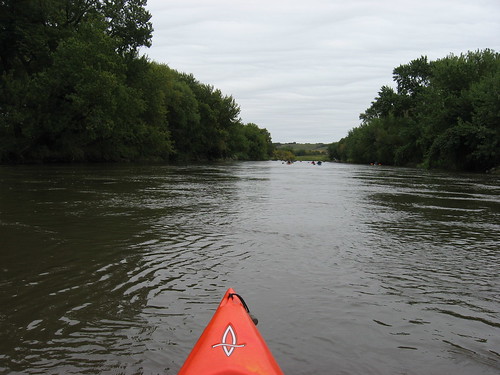
With the eight kayaks moving along, there tended to be a couple of conversation groups, and then some of us moved along the edge or behind the pack to commune with nature in near solitude. These configurations of paddlers were fluid; at times I found myself bringing up the rear and cruising along the shore, and then at other times I found myself engaged in conversation. Generally, paddlers string out on these river cruises, sometimes for over a mile. A smaller group, as we had today, tends to be more bunched up as it moves downstream – at least everyone in sight.
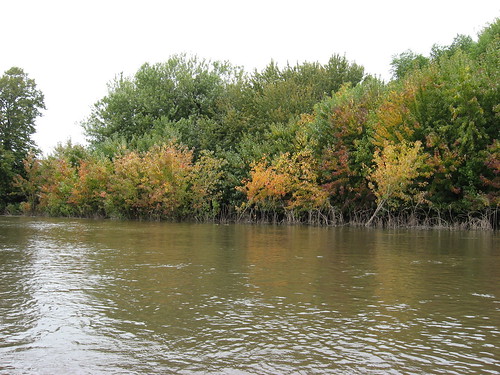
The change in seasons is readily seen in the changing colors of the trees. The banks of the Big Sioux tend to be wooded, most often with large cottonwood trees. On this stretch, one can see the drying corn fields through the tree stands along the shore. The approach of fall was apparent as we moved along the river.

The river and the banks were deserted during our trip. I didn’t see another person or hear any machinery. There were only isolated buildings visible along this part of the river.
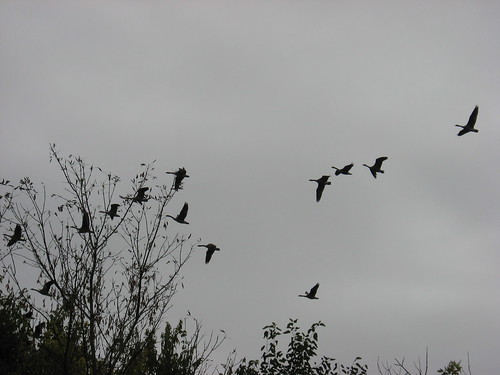
We did not see much wildlife; groups tend to cause most wildlife to lie low until the boats and talk pass. We did see a large group of geese at one point. Many migratory birds have already left for more attractive feeding areas south of here.
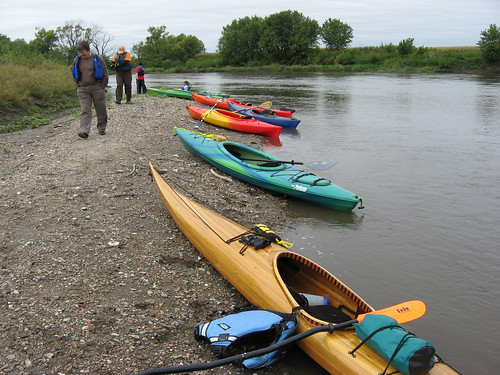
We stopped about halfway down our planned course at a gravel beach. Since we really had not worked terribly hard on the trip, we spent only about 10 minutes stretching. From there, it was another easy 45 minutes or so until we reached the take-out. Our trip concluded at a public access area just across the highway from the Newton Hills Trail Camp. We zipped down the nine miles in two hours today, including our brief rest stop.
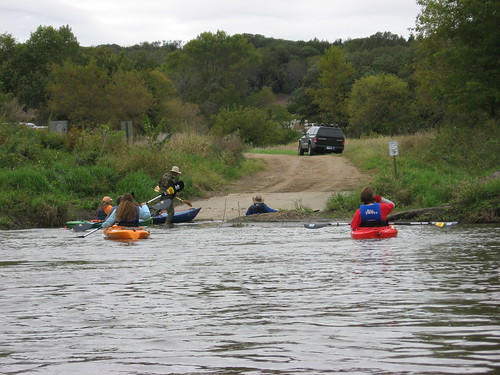
This was another of those many segments along the Big Sioux that are pretty easy to paddle. I can’t remember being on this stretch of the river, although club cruises have given me the opportunity over the past couple of years to paddle nearly from Flandreau to Newton Hills. As I paddled along, I thought about Brian Gundvaldson and his trip through these waters just a couple weeks ago. Brian is the young guy who left Egan, SD, on September 3 heading for the Gulf of Mexico, a trip of 2,100 miles. As of yesterday, he had reached Kansas City and will be on his way to St. Louis next. Like many, I am following his trip on Facebook.
